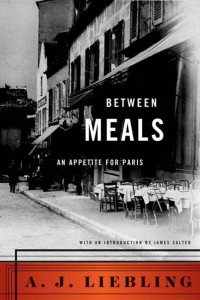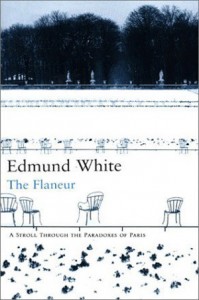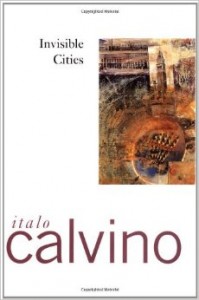Readings
Between Meals: An Appetite for Paris
for Paris
By, A.J. Liebling
According to The New Yorker’s A.J. Liebling, a good appetite is essential for writing about food. He brings an insatiable appetite to this Parisian romp, highlighting all the nuances of French eating along the way. This ode to overindulging arouses an appetite for everything from oysters to steak to cassoulet. The shocking amount of calories Liebling ingested as research for this book may have not been healthy, but it surely makes for pure pleasurable reading.
By, Italo Calvino
Imaginary conversations between Marco Polo and his host, the Chinese ruler Kublai Khan, conjure up cities of magical times. “Of all tasks, describing the contents of a book is the most difficult and in the case of a marvelous invention like Invisible Cities, perfectly irrelevant”
Gypsy Jazz
By, Michael Dregni
Of all the styles of jazz to emerge in the twentieth century, none is more passionate, more exhilaratingly up-tempo, or more steeped in an outsider tradition than Gypsy Jazz. And there is no one more qualified to write about Gypsy Jazz than Michael Dregni, author of the acclaimed biography, Django.A vagabond music, Gypsy Jazz is played today in French Gypsy bars, Romany encampments, on religious pilgrimages–and increasingly on the world’s greatest concert stages. Yet its story has never been told, in part because much of its history is undocumented, either in written form or often even in recorded music. Beginning with Django Reinhardt, whose dazzling Gypsy Jazz became the toast of 1930s Paris in the heady days of Josephine Baker, Picasso, and Hemingway, Dregni follows the music as it courses through caravans on the edge of Paris, where today’s young French Gypsies learn Gypsy Jazz as a rite of passage, along the Gypsy pilgrimage route to Les Saintes-Maries-de-la-Mer where the Romany play around their campfires, and finally to the new era of international Gypsy stars such as Bireli Lagrene, Boulou Ferre, Dorado Schmitt, and Django’s own grandchildren, David Reinhardt and Dallas Baumgartner. Interspersed with Dregni’s vivid narrative are the words of the musicians themselves, many of whom have never been interviewed for the American press before, as they describe what the music means to them. Gypsy Jazz also includes a chapter devoted entirely to American Gypsy musicians who remain largely unknown outside their hidden community. Blending travelogue, detective story, and personal narrative, Gypsy Jazz is music history at its best, capturing the history and culture of this elusive music–and the soul that makes it swing.
 The Flaneur: A Stroll through the Paradoxes of Paris
The Flaneur: A Stroll through the Paradoxes of Paris
By, Edmond White
A flâneur is a stroller, a loiterer, someone who ambles through city streets in search of adventure and fulfillment. Edmund White, who lived in Paris for sixteen years, wanders through the streets and avenues and along the quays, into parts of Paris virtually unknown to visitors and indeed to many Parisians. In the hands of the learned White, a walk through Paris is both a tour of its lush, sometimes prurient history and an evocation of the city’s spirit. The Flâneur leads us to bookshops and boutiques, monuments and palaces, giving us a glimpse into the inner human drama. Along the way we learn everything from the latest debates among French lawmakers to the juicy details of Colette’s life.
 Making Jazz French: Music and Modern Life in Interwar Paris
Making Jazz French: Music and Modern Life in Interwar Paris
By Jeffrey H. Jackson
Between the world wars, Paris welcomed not only a number of glamorous American expatriates, including Josephine Baker and F. Scott Fitzgerald, but also a dynamic musical style emerging in the United States: jazz. Roaring through cabarets, music halls, and dance clubs, the upbeat, syncopated rhythms of jazz soon added to the allure of Paris as a center of international nightlife and cutting-edge modern culture. In Making Jazz French, Jeffrey H. Jackson examines not only how and why jazz became so widely performed in Paris during the 1920s and 1930s but also why it was so controversial.
Drawing on memoirs, press accounts, and cultural criticism, Jackson uses the history of jazz in Paris to illuminate the challenges confounding French national identity during the interwar years. As he explains, many French people initially regarded jazz as alien because of its associations with America and Africa. Some reveled in its explosive energy and the exoticism of its racial connotations, while others saw it as a dangerous reversal of France’s most cherished notions of “civilization.” At the same time, many French musicians, though not threatened by jazz as a musical style, feared their jobs would vanish with the arrival of American performers. By the 1930s, however, a core group of French fans, critics, and musicians had incorporated jazz into the French entertainment tradition. Today it is an integral part of Parisian musical performance. In showing how jazz became French, Jackson reveals some of the ways a musical form created in the United States became an international phenomenon and acquired new meanings unique to the places where it was heard and performed.
By Ernest Hemingway
Begun in the autumn of 1957 and published posthumously in 1964, Ernest Hemingway’s A Moveable Feast captures what it meant to be young and poor and writing in Paris during the 1920s. A correspondent for the Toronto Star,Hemingway arrived in Paris in 1921, three years after the trauma of the Great War and at the beginning of the transformation of Europe’s cultural landscape: Braque and Picasso were experimenting with cubist form; James Joyce, long living in self-imposed exile from his native Dublin, had just completed Ulysses; Gertrude Stein held court at 27 Rue de Fleurus, and deemed young Ernest a member of une gneration perdue; and T.S. Eliot was a bank clerk in London. It was during these years that the as-of-yet unpublished young writer gathered the material for his first novel The Sun Also Rises, and the subsequent masterpieces that followed.
By Victor Hugo
Les Misérables ranks among the greatest novels of all time. In it, Victor Hugo takes readers deep into the Parisian underworld, immerses them in a battle between good and evil, and carries them to the barricades during the uprising of 1832 with a breathtaking realism that is unsurpassed in modern prose. Within his dramatic story are themes that capture the intellect and the emotions: crime and punishment, the relentless persecution of Valjean by Inspector Javert, the desperation of the prostitute Fantine, the amorality of the rogue Thénardier, and the universal desire to escape the prisons of our own minds. Les Misérables gave Victor Hugo a canvas upon which he portrayed his criticism of the French political and judicial systems, but the portrait that resulted is larger than life, epic in scope—an extravagant spectacle that dazzles the senses even as it touches the heart.



